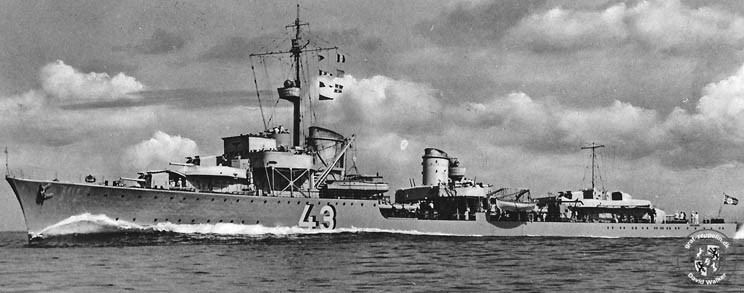Ordered 6 January 1936 Laid down 15 December 1936 Construction started 15 December 1936 Length 125 m | Yard number 923 Completed 20 June 1939 Launched 20 August 1938 Beam 12 m | |
 | ||
Builders Deutsche Schiff- und Maschinenbau, AG Weser | ||
Z21 Wilhelm Heidkamp was a Type 1936-class destroyer built for the Kriegsmarine in the late 1930s.
Contents
Design and description
Wilhelm Heidkamp had an overall length of 125.10 meters (410 ft 5 in) and was 120 meters (393 ft 8 in) long at the waterline. The ship had a beam of 11.80 meters (38 ft 9 in), and a maximum draft of 4.50 meters (14 ft 9 in). She displaced 2,411 long tons (2,450 t) at standard load and 3,415 long tons (3,470 t) at deep load. The two Wagner geared steam turbine sets, each driving one propeller shaft, were designed to produce 70,000 PS (51,000 kW; 69,000 shp) using steam provided by six high-pressure Wagner boilers with superheaters for a designed speed of 36 knots (67 km/h; 41 mph). Wilhelm Heidkamp carried a maximum of 739 metric tons (727 long tons) of fuel oil which gave a range of 2,050 nautical miles (3,800 km; 2,360 mi) at 19 knots (35 km/h; 22 mph). Her crew consisted of 10 officers and 313 sailors.
The ship carried five 12.7 cm SK C/34 guns in single mounts with gun shields, two each superimposed, fore and aft. The fifth mount was positioned on top of the rear deckhouse. Her anti-aircraft armament consisted of four 3.7 cm SK C/30 guns in two twin mounts abreast the rear funnel and six 2 cm C/30 guns in single mounts. The ship carried eight above-water 53.3-centimeter (21.0 in) torpedo tubes in two power-operated mounts. Four depth charge throwers were mounted on the sides of the rear deckhouse and they were supplemented by six racks for individual depth charges on the sides of the stern. Sufficient depth charges were carried for either two or four patterns of sixteen charges each. Mine rails could be fitted on the rear deck that had a maximum capacity of sixty mines. 'GHG' (Gruppenhorchgerät) passive hydrophones were fitted to detect submarines and an active sonar system was installed by the end of 1939.
Battles of Narvik
During Operation Weserübung, the German invasion of Norway, Wilhelm Heidkamp was the flagship of the Kriegsmarine force assigned to attack Narvik. On 9 April 1940, Wilhelm Heidkamp sank the old Norwegian coastal defense ship Eidsvold with torpedoes after an attempt to get the ship to surrender failed. The next day, five British destroyers engaged the German force in the First Naval Battle of Narvik. During the battle, Wilhelm Heidkamp was sunk and its commander, Commodore Bonte, was killed.
